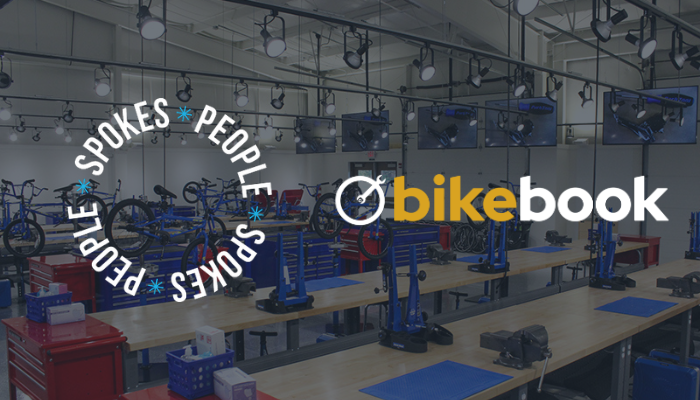September 15, 2025
•
9 minute read
How to Open a Bike Repair Shop in the UK
You've set your sights on launching a bike repair shop in the UK, fuelled by a passion for cycling and a knack for fixing things.
Jake Fieldsend
Founder & CFO
You've set your sights on launching a bike repair shop in the UK, fuelled by a passion for cycling and a knack for fixing things. But where do you start? Let’s cut through the clutter and get you on the right path. The UK's cycling market is thriving, with more people opting for healthier and eco-friendly transport. So, how do you tap into this opportunity? This guide provides the blueprint to navigate through planning, setting up, and growing a successful bike repair business. Let’s get your wheels turning—literally!
1. Planning Your Bike Repair Business
1.1 What Do You Need to Start?
Starting a bike repair shop is more than just having a set of wrenches at hand. You need a clear vision, business acumen, and the right resources. Begin with a business plan that outlines:
- Business objectives: Define what you want to achieve in the short and long term.
- Target market: Identify your primary customers—are they commuters, avid cyclists, or mountain biking enthusiasts?
- Services offered: Decide whether you’ll offer bike maintenance, part replacements, or specialised services like custom bike builds.
Locking in your initial investments is another priority. Consider the cost of renting or purchasing a workspace, buying tools, hiring staff, and obtaining insurance. Failing to understand these financial requirements can derail your entrepreneurial journey even before it begins. Calculate the initial expenses and explore potential funding options like:
- Personal savings: Often the first source of capital.
- Small business loans: Applies to various UK financial institutions.
- Grants: Check local councils for small business grants in your area.
Pro-tip: Obtaining insurance is non-negotiable. It protects your business from liabilities, ensuring that a single mishap doesn’t spell disaster.
1.2 Understanding the UK Bike Market
The bike market in the UK is vibrant and diverse, with its own unique set of opportunities and challenges. Recent data from the Bicycle Association reveals consistent growth in cycling, partly driven by increased health consciousness and environmental awareness. But what does this mean for you?
- Demographics: Understand who your customers are. Are they urban commuters looking for quick fixes, or leisurely cyclists who need seasonal check-ups?
- Seasonal trends: Sales usually spike in spring and summer. Use quieter months for maintenance promotions or workshops.
- Competitor analysis: Identify what competing shops in your area offer. Is there a gap you could fill?
Digging deep into these aspects will sharpen your competitive edge. Keep a close eye on industry reports to stay aligned with evolving trends and consumer behaviour. The deeper your market understanding, the better positioned you’ll be to cater to specific consumer needs.
1.3 Choosing a Business Model
Selecting the right business model is crucial in how you manage operations and attract customers. Your model should reflect the services you plan to offer and how you wish to engage with the market. Consider these types:
- Brick-and-mortar: A traditional setup with on-site services appeals directly to local cyclists. Ensure your location is convenient and accessible.
- Mobile repair: As urban cycling rises, services that come to the customer are in demand. A van fully equipped with tools can offer flexible, on-the-go service.
- Hybrid: Combine both approaches to maximise reach. Offer in-store repairs along with mobile services for busy customers.
Each model comes with its own logistical considerations and cost structures. For example, a mobile repair business might save on rent but will incur vehicle maintenance costs. Choosing the best model boils down to weighing these factors against your business goals.
Pro-tip: Test your business model with a pilot run. Start small, evaluate what works and what doesn't, and scale accordingly.
2. Setting Up Your Bike Repair Shop
2.1 Finding the Right Location
Finding an ideal location is crucial for the success of your bike repair shop. Think about setting up shop in a busy area, perhaps near popular cycling routes or in neighbourhoods with high biking activity. Locations near universities or business districts can also be promising options due to the high concentration of commuters. Remember, visibility and accessibility are key, so don’t settle for a hidden spot that potential customers might overlook.
Consider the following factors when choosing your location:
- Foot Traffic: Higher foot traffic usually means more potential customers.
- Proximity to Cycling Lanes: Being close to cycling paths can be a major advantage.
- Demographics: Understand the type of customers in the area - are they casual cyclists, or more professional bikers?
Pro-tip: Evaluate competition — while being near other shops can increase visibility, too much competition may cut into your profits.
2.2 Required Tools and Equipment
Equipping your bike shop with the right tools is non-negotiable. Invest in high-quality repair stands, wheel truing stands, and a comprehensive set of hand tools. You'll also need specific tools like a crank puller, chain checker, and pedal wrench. Skimping on these core tools could risk both your efficiency and reputation for quality service.
Below are some essential tools for your shop:
- Bicycle Repair Stand: A stable and adjustable stand for different bike types.
- Wheel Truing Stand: Enables precision while fixing bent rims.
- Toolkit: Includes allen keys, chain tools, and a torque wrench.
- Lubricants and Cleaners: Ensure smooth bike operations and long-term customer satisfaction.
Pro-tip: Opt for brands like Park Tool or Shimano, which are known for durability and precision.
2.3 Leveraging Bikebook for Workshop Management
Managing a bike repair shop can be cumbersome without the right system. Bikebook’s Workshop Managementplatform can transform your chaos into order by streamlining bookings and improving customer interaction, ensuring smooth operations. This tool lets you maintain an organised schedule and provides a centralised database for customer details, ensuring you never miss a beat.
Advantages of using Bikebook include:
- Easy Booking System: Customers can book services online, reducing walk-in unpredictability.
- Customer Management: Keep track of customer history and preferences for better service.
- Inventory Management: Stay on top of your supplies and order new stock before old runs out.
- Review Integration: Make use of positive customer reviews to build trust and enhance your shop’s reputation.
Pro-tip: Utilise the review system within Bikebook to encourage satisfied customers to leave feedback, making your shop more attractive to new clients.
3. Growing Your Bike Repair Business
3.1 Marketing Strategies
Building a successful marketing strategy for your bike repair business is all about understanding where your potential customers spend their time. Leverage both online and offline channels to ensure you capture a broad audience. Make use of social media platforms like Instagram to share before-and-after shots of bike repairs. This not only showcases your expertise but also builds trust with potential customers.
Offline marketing shouldn't be neglected either. Getting involved in local cycling events and sponsoring bike races can increase your visibility in the community. Word-of-mouth referrals are tremendously powerful, so consider creating a referral programme to incentivise current customers to spread the word about your exceptional service. Just a small discount can encourage them to bring in friends and family!
Pro-tip: Add a dedicated landing page on your website that specifically targets local searches for "bike repair near me" to capture local leads effectively.
3.2 Joining Bikebook to Attract Local Cyclists
Becoming a part of platforms like Bikebook can greatly enhance your visibility to local cyclists searching for prompt, reliable services. Rather than spending hours optimising your own website, you can leverage Bikebook's comprehensive database to reach prospective customers. Bikebook lets you compare and review local mechanics, providing clients with confidence in choosing your services.
Features of joining Bikebook:
- Mass local exposure with thousands of users
- Easy comparisons to showcase your competitive edge
- Real reviews enhance credibility and trust
- Free to join, keeping advertising costs down
- Efficient booking and management tools to streamline your process
Pro-tip: Use customer reviews and photos on Bikebook to attract engagement and build rapport with local cycling enthusiasts.
3.3 Providing Outstanding Customer Service
To truly grow your bike repair business, prioritising customer service is key. Communication and reliability aren’t just buzzwords; they’re what keep customers coming back. Implement a simple communication system, perhaps even using a dedicated smartphone number or a platform like WhatsApp, to keep customers updated on repair progress and completion times.
Creating a personal touch matters – send follow-up messages post-service to ensure satisfaction and to remind them of maintenance tips. Offering free check-ups for a limited time after repairs could be a great way to show customers you care about their ongoing biking experience.
Thriving businesses are built on loyal customers who feel valued and understood. As simple as it sounds, small gestures such as offering a free coffee while they wait or remembering a customer’s name can create a strong, lasting bond. Being proactive rather than reactive in customer service can transform a one-time customer into a lifelong advocate for your business.
Reflecting on these key growth strategies, it's clear that opening a bike repair shop in the UK offers numerous opportunities for success. From optimising marketing efforts and uniting with platforms like Bikebook, to going above and beyond with customer service, each step brings you closer to achieving thriving business growth. The cycling market in the UK is expansive and ready for passionate entrepreneurs to make their mark.
Curious about reaching more customers? Explore how you can integrate your shop with Bikebook here to ensure you tap into the vast network of local cyclists looking for quality services.
Frequently Asked Questions
How to set up a bicycle repair shop?
Begin by researching the local market and securing the necessary licenses. Next, find a suitable location and purchase quality tools and equipment. Recruit skilled mechanics if needed, and implement a management system. A strong marketing plan can help attract customers quickly.
Is fixing bikes profitable?
Yes, fixing bikes can be profitable due to the growing popularity of cycling. Offering quality repairs and outstanding customer service can lead to repeat business, further increasing profitability. Local demand and competitive pricing also play a role in your success.
How do I become a bike mechanic UK?
To become a bike mechanic in the UK, consider gaining formal qualifications such as a Level 2 Bicycle Mechanic course. Additionally, gaining hands-on experience through internships or workshops can help refine your skills. Constant learning and staying updated with industry trends are essential.
Is the bicycle business profitable?
The bicycle business can be very profitable, given the rise in cycling popularity. Diverse services like sales, repairs, and rentals can generate various income streams. According to recent studies, the UK cycling market continued to grow, emphasizing opportunities for business profits.



